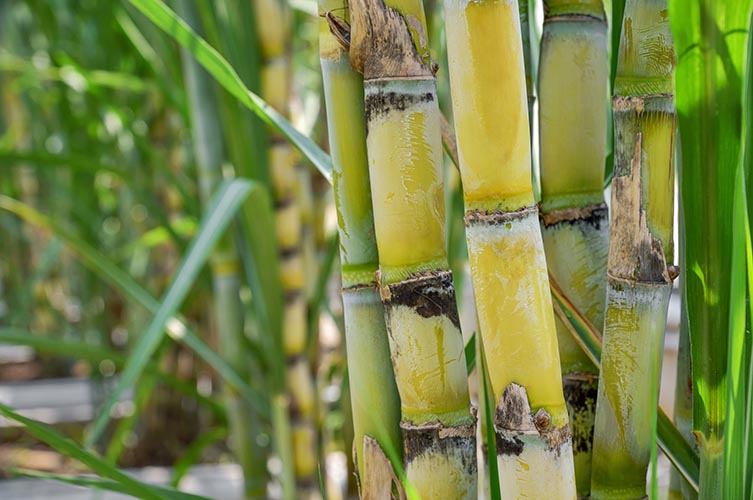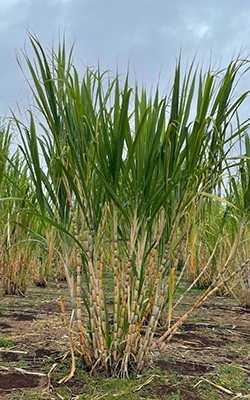Everything About Sugar Canes: What Are Sugar Canes Used For and Their Duty in International Agriculture?
Sugar canes work as a foundation of global agriculture, mostly acknowledged for their function in sugar production. They additionally contribute to the production of byproducts like molasses and ethanol. These facets not only support numerous industries yet likewise impact financial security in rural areas. However, the farming of sugar walking sticks encounters considerable environmental obstacles. Recognizing their multifaceted function prompts additional expedition right into their farming techniques and sustainability efforts.
The Agricultural Process of Sugar Walking Stick Farming
Although sugar walking stick cultivation may vary by region, the essential farming process stays regular. The very first step involves picking high-yielding ranges appropriate for neighborhood climates. Preparation of the soil is crucial, typically calling for husbandry and the addition of fertilizers to boost fertility. Growing usually takes place throughout the stormy season, with farmers using either whole stalks or cuttings to establish brand-new crops.As the plants expand, they call for diligent treatment, consisting of weed control, parasite management, and watering, depending upon the ecological problems. Farmers keep track of the sugar cane's development cycle, which usually spans 10 to 24 months, prior to collecting. Collecting is labor-intensive, usually carried out manually or with specialized machinery, making sure marginal damage to the stalks. Following harvest, the cane is moved to refining centers. This precise cultivation procedure not only supports neighborhood economic situations yet also plays a significant role in international farming methods, adding to food and energy products.
Sugar Manufacturing: From Walking Stick to Crystal
The journey of sugar production starts the minute freshly harvested sugar walking stick gets to refining facilities. The initial step includes chopping the walking cane and cleaning to prepare it for removal. Using high-pressure rollers, the juice is removed from the smashed cane, causing a wonderful liquid recognized as sugarcane juice. This juice undergoes information, where impurities are gotten rid of via the addition of lime and heat.Next, the made clear juice is concentrated by steaming it to develop a thick syrup. This syrup is after that crystallized by cooling down, allowing sugar crystals to create. The taken shape sugar is divided from the remaining syrup, referred to as molasses, through centrifugation.Finally, the sugar crystals are washed and dried, resulting in the acquainted granulated sugar (What Are Sugar Canes Used For). This procedure changes raw sugar cane right into an item that is integral to different cooking and industrial applications, highlighting the relevance of sugar in global agriculture
Biofuels and Sugar Canes: A Sustainable Future
As the world progressively looks for sustainable power solutions, sugar walking canes have become an appealing source for biofuels. The biomass obtained from sugar walking canes can be transformed right into ethanol, a renewable fuel option that considerably lowers greenhouse gas discharges compared to nonrenewable fuel sources. This procedure not only gives a cleaner energy source however also promotes power freedom for lots of countries.In addition, sugar walking cane growing supports rural economic climates by creating work in both farming and biofuel production markets. Making use of sugar walking sticks for biofuel production additionally encourages agricultural diversification, which can improve dirt wellness and reduce dependence on single crops. The spin-offs of sugar cane processing can be made use of for power generation, furthermore contributing to a sustainable energy cycle. As nations venture to satisfy renewable resource targets, sugar walking canes are positioned to play an essential duty in forming a much more sustainable future in the biofuel landscape.

The Function of Sugar Canes in Beverage Manufacturing
Sugar walking canes play a substantial role in drink manufacturing, functioning as a primary ingredient in rum and adding to the sweet taste of lots of sodas. Furthermore, their natural juices are made use of in numerous drinks, improving flavor and appeal. This versatility underscores the relevance of sugar walking canes in the worldwide drink market.
Sugar Walking Stick in Rum
Rum production is delicately linked to the cultivation of sugar walking cane, a crucial plant that gives the essential fermentable sugars needed for fermentation. This process starts with the extraction of juice from collected sugar walking sticks, which is then either fermented directly or processed into molasses. Yeast is included in convert the sugars right into alcohol, causing a diverse series of rum designs, from light to dark varieties. The geographical area where the sugar walking stick is expanded substantially affects the taste account of the rum, with variables such as soil type and climate having fun critical duties. Countries like Barbados, Jamaica, and Cuba are renowned for their rum manufacturing, showing the historical and cultural significance of sugar walking cane within the worldwide drink market.
Soft Drinks Sugar Source

All-natural Juice Manufacturing Utilizes
Along with its substantial duty in soft beverage manufacturing, sugar walking stick is likewise critical in the natural juice industry. The juice drawn out from sugar walking stick, known as cane juice, is commemorated for its all-natural sweet taste and distinct flavor profile. This juice is frequently taken in fresh in different regions, specifically in exotic nations, where it is enjoyed as a renewing beverage. In addition, cane juice functions as a base active ingredient in an array of all-natural fruit juices and shakes, improving both taste and dietary value. Its all-natural buildings make it an appealing alternative to sweetening agents, attracting health-conscious consumers. On the whole, sugar walking stick's convenience in juice production emphasizes its value in modern drink offerings worldwide.
Developments in Sugar Walking Cane Byproducts
Advancements in sugar cane by-products are leading the way for lasting options in different sectors. Biofuels originated from sugar walking stick offer a different energy resource, while advancements in lasting product packaging are decreasing dependence on traditional products. These developments highlight the adaptability and potential of sugar walking stick past its primary use in drink manufacturing.
Biofuels From Sugar Walking Cane
How can the results useful content of sugar walking cane add to lasting energy services? The conversion of sugar walking cane right into biofuels offers an encouraging method for renewable resource. By using the fibrous residue, called bagasse, producers can create bioethanol via fermentation processes. This bioethanol can serve as a sustainable option to fossil gas, lowering greenhouse gas emissions and reliance on non-renewable sources. Furthermore, molasses, one get more more by-product, can be fermented to generate biofuels, optimizing source efficiency. The power generated from sugar cane not only offers a cleaner fuel source however likewise improves the general economic viability of sugar production. By integrating biofuel production into their operations, sugar cane industries can play an important role in advancing sustainable energy options internationally.
Lasting Packaging Solutions
Lasting packaging services are increasingly being developed from sugar cane results, showcasing the flexibility of this farming staple. Technologies such as biodegradable plastics acquired from bagasse, the fibrous deposit left after juice removal, are obtaining traction. These products offer an environment-friendly choice to standard plastics, decreasing reliance on fossil fuels and decreasing carbon footprints. Additionally, sugar cane-based product packaging is compostable, damaging down naturally without damaging the setting. Business are currently checking out these options to line up with consumer need for sustainability. As understanding of plastic pollution expands, the adoption of sugar cane-derived packaging is expected to climb, placing sugar walking sticks as a principal in the change to greener product packaging services in various markets.
Economic Impact of Sugar Walking Stick Farming

Sugar walking stick farming has deep roots in lots of economies, its economic influence extends far past farming production. This crop serves as a considerable income source for countless farmers worldwide, specifically in developing countries where farming is a main livelihood. Sugar walking stick adds to neighborhood economies with work production in handling, harvesting, and growing. The market additionally boosts development in relevant sectors such as transportation, equipment manufacturing, and food processing.Furthermore, sugar walking stick is a principal in worldwide profession, affecting global markets and costs. Countries that create sugar walking stick usually rely upon exports to enhance their economic stability. The by-products of sugar cane, such as ethanol and molasses, diversify income streams for farmers and add value to the agricultural market. In general, the financial implications of sugar walking stick farming are profound, impacting not only farmers but additionally nationwide economic climates and entire neighborhoods.
Environmental Considerations in Sugar Cane Growing
While sugar walking cane farming plays a crucial function in many economic climates, it likewise raises significant ecological issues that can not be overlooked. The extensive use plant foods and chemicals in sugar cane farming commonly results in dirt degradation and water contamination. Drainage from these chemicals can pollute nearby water bodies, damaging aquatic ecological communities. Furthermore, the monoculture techniques prevalent in sugar walking stick farming reduce biodiversity, making ecological communities more susceptible to insects and diseases.Deforestation is another see this site important problem, as land is commonly gotten rid of to give way for sugar haciendas, leading to habitat loss for wild animals and increased carbon emissions. The high water usage needed for sugar walking cane watering can stress regional water sources, specifically in dry areas. As global demand for sugar continues to rise, attending to these ecological obstacles becomes necessary to guarantee lasting methods in sugar walking stick growing.
Frequently Asked Questions
What Are the Nutritional Conveniences of Sugar Cane?
The nutritional advantages of sugar walking cane largely include its high carb web content, supplying power. Furthermore, it consists of vitamins, minerals, and antioxidants that may support general health and wellness, though small amounts is essential due to its sugar content.
How Does Sugar Walking Cane Affect Citizen Ecosystems?
Sugar walking cane farming can substantially impact regional communities by changing land use, affecting biodiversity, and calling for considerable water resources. In addition, it might bring about dirt deterioration and pesticide drainage, interfering with surrounding environments and wild animals populations.
What Is the Background of Sugar Walking Stick Cultivation?

Exist Alternatives to Sugar Cane for Sugar Manufacturing?
Alternatives to sugar walking stick for sugar manufacturing include sugar beetroots, corn, and different tropical plants like sorghum and agave (What Are Sugar Canes Used For). These plants provide varied sources of sweet taste, each with unique growing requirements and ecological impacts
Exactly How Do Weather Patterns Influence Sugar Walking Cane Yields?
Climate patterns greatly influence sugar walking cane returns through temperature level fluctuations, rains quantities, and seasonal cycles. Dry spell or excessive rains can hinder growth, while excellent problems enhance photosynthesis, eventually influencing the quantity and top quality of the harvest. The trip of sugar production starts the moment newly collected sugar cane shows up at processing centers. The crystallized sugar is separated from the continuing to be syrup, understood as molasses, through centrifugation.Finally, the sugar crystals are cleaned and dried out, resulting in the familiar granulated sugar. Rum production is elaborately connected to the farming of sugar cane, a crucial crop that supplies the needed fermentable sugars required for fermentation. Additionally, the monoculture techniques prevalent in sugar cane farming minimize biodiversity, making ecosystems extra susceptible to bugs and diseases.Deforestation is another essential issue, as land is typically gotten rid of to make way for sugar ranches, leading to environment loss for wild animals and increased carbon emissions. Alternatives to sugar walking stick for sugar manufacturing consist of sugar beets, corn, and different tropical plants like sorghum and agave.